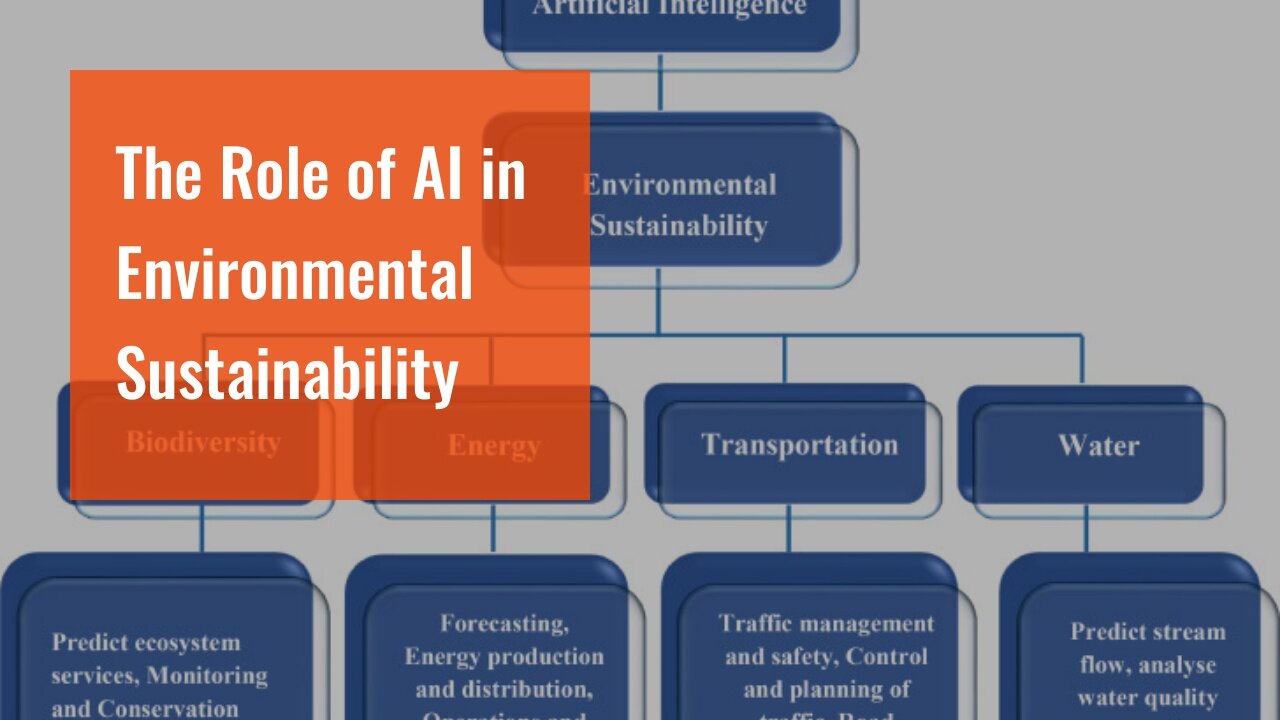Premium Only Content

The Role of AI in Environmental Sustainability
The Role of AI in Environmental Sustainability
In a world where the impacts of climate change are becoming more evident every day, pressure is on for policymakers and industry leaders to seek out and implement sustainable practices for the long-term preservation of our environment. A key component of finding and managing this balance between progress and planet is the development and utilization of artificial intelligence.
AI, or artificial intelligence, is a branch of computer science focused on developing machines and software that can learn, respond and grow without requiring direct human input or oversight. AI algorithms, for example, are highly adept at gathering, processing and analyzing large...
https://finetimer.site/the-role-of-ai-in-environmental-sustainability/
In a world where the impacts of climate change are becoming more evident every day, pressure is on for policymakers and industry leaders to seek out and implement sustainable practices for the long-term preservation of our environment. A key component of finding and managing this balance between progress and planet is the development and utilization of artificial intelligence.
AI, or artificial intelligence, is a branch of computer science focused on developing machines and software that can learn, respond and grow without requiring direct human input or oversight. AI algorithms, for example, are highly adept at gathering, processing and analyzing large data sets to generate advanced insights and predictions.
This same precision can be leveraged in a variety of ways to improve environmental sustainability. AI can be used to accurately predict climate and weather patterns in order to better prepare for extreme disasters and avoid unnecessary risk to people and land. AI can also be applied to networked sensor systems in both urban and rural environments to track and monitor resources like water, energy usage and air quality. This helps reduce waste while also improving public health by detecting toxic substances in the air or water.
In addition, AI can make it easier to detect and respond to environmental threats such as illegal logging or wildlife poaching. By studying past activity and using AI-augmented sensors, law enforcement officials can detect suspicious activity or poachers before they cause any real damage.
Finally, AI can also help reduce emissions from industrial activities. By programing machines with advanced algorithms, trained to recognize patterns in production, AI can find potential inefficiencies that may be wasting energy or producing excess emissions. This can help reduce a company’s carbon footprint without sacrificing productivity. Overall, AI has the potential to reshape the way we interact with and manage the environment in a positive way. By marrying human ingenuity with the power of computing, AI can help us find balance between environmental protection and economic growth. The use of Artificial Intelligence (AI) in environmental sustainability has the potential to revolutionize how we understand and protect our planet. AI is already being used to collect and analyze data for numerous environmental applications and the possibilities for the future of this technology are endless.
A key component of environmental sustainability is the efficient and sustainable use of resources. AI can help organizations and governments plan and manage resource usage more effectively. For example, AI-based optimization algorithms can be used to reduce energy consumption or improve water management systems. Additionally, AI can be used to understand changes in the environment over time and anticipate potential impacts on natural resources.
AI can also be used in the field of wildlife conservation. AI-driven imaging and analysis can be used to monitor the activities of animals, collect data on their habitat, and predict which areas are at risk for destruction. AI can also be used to help track poachers and alert authorities.
AI can also be used to monitor air, water, and soil quality in order to identify potential pollution sources. AI-driven algorithms can be used to monitor and detect toxic gases, sediment and runoff, and other pollutants. Additionally, AI can be used to assess the environmental impact of construction projects in order to ensure compliance with environmental regulations.
AI can also be used for broader environmental applications such as climate change. AI-driven models can be used to analyze climate data and anticipate po...
-
 6:44
6:44
FineTimer
2 years agoHow to Choose the Right Router Protocol for Your Network
531 -
 2:22:46
2:22:46
The Connect: With Johnny Mitchell
9 hours ago $1.35 earnedOne Man's Mission To Stop Human Trafficking: How A Billionaire Mercenary Saved Hundreds Of Children
10.3K4 -

Tundra Tactical
5 hours ago $2.13 earned🔫 California Ammo Win, Sig Sauer P320 Controversy, Meme Review & Would You Rather! 🎉🔥
20.6K1 -
 16:24
16:24
Forrest Galante
2 hours ago6 Deadliest Man Eaters to Ever Exist
15K3 -
 10:14
10:14
MattMorseTV
7 hours ago $9.88 earnedThe EU is in HOT WATER.
76.4K39 -
 LIVE
LIVE
The Rabble Wrangler
1 day agoPUBG with The Best in the West!
235 watching -
 3:57:19
3:57:19
EvilT4000
6 hours ago $0.90 earnedSaturday.....🟢For energy and focus click my Dubby link!
17.3K2 -
 LIVE
LIVE
SlingerGames
2 hours agoSpartan Night - Halo and More | Creator for @SELFMADEGGS
51 watching -
 3:57:49
3:57:49
Mally_Mouse
8 hours agoSpicy Saturday!! - 10k CELEBRATION! - Let's Play: Labyrinthine
28.9K1 -
 37:09
37:09
The Mel K Show
9 hours agoMel K & Dr. Kirk Moore | A Doctor’s Oath: Doing What is Right No Matter the Cost | 7-26-25
29.8K11